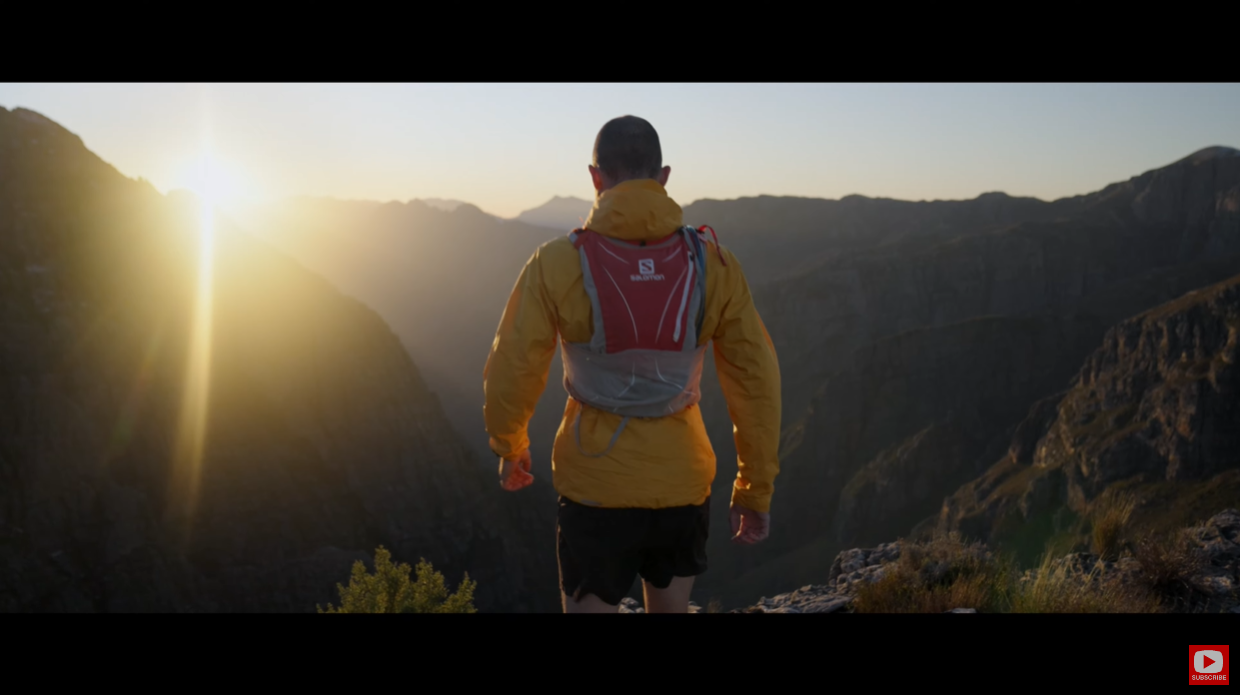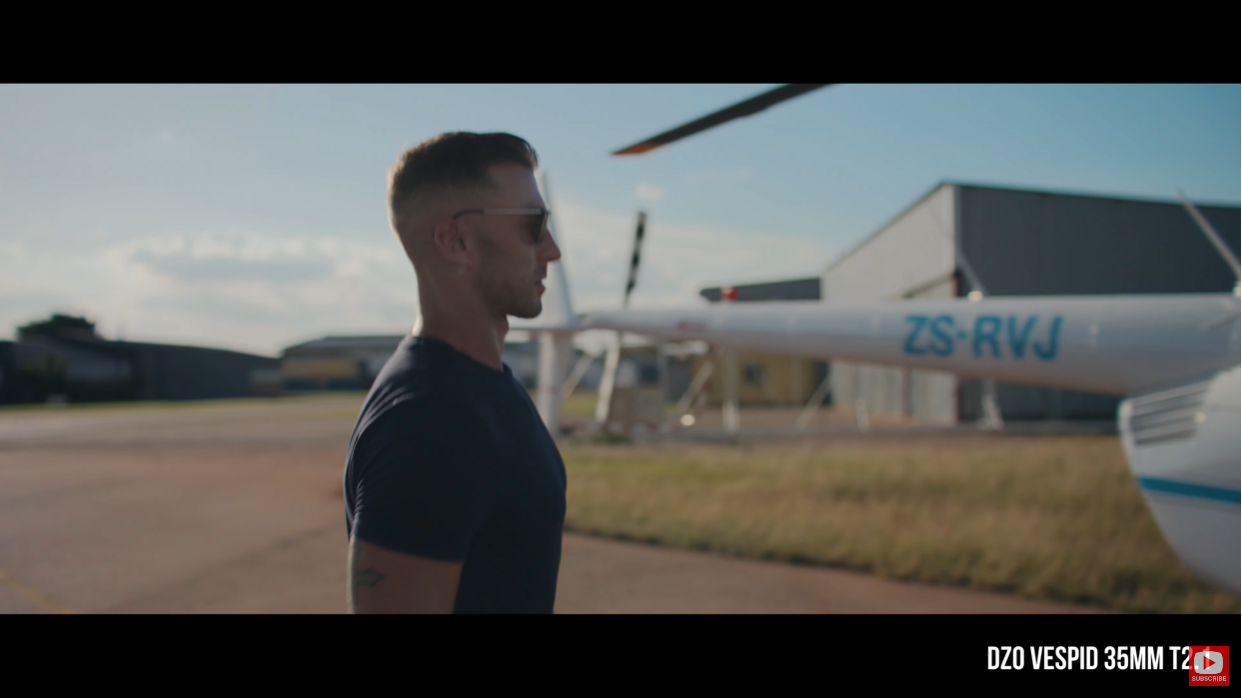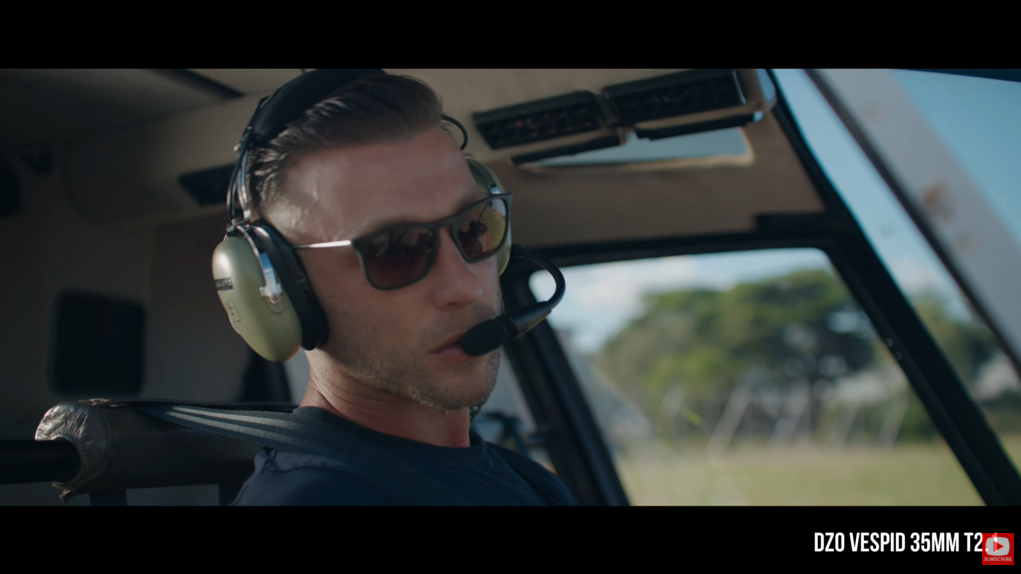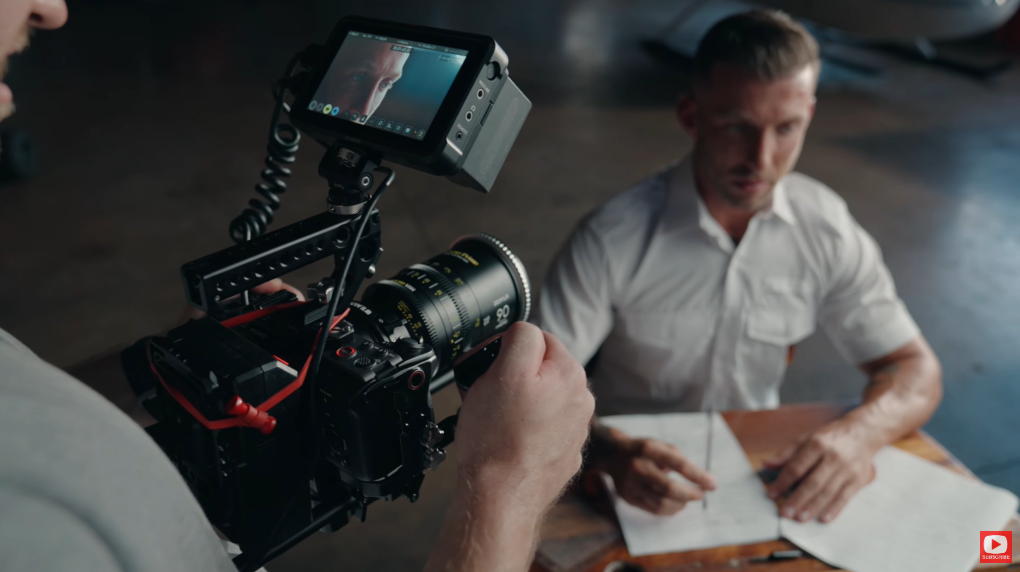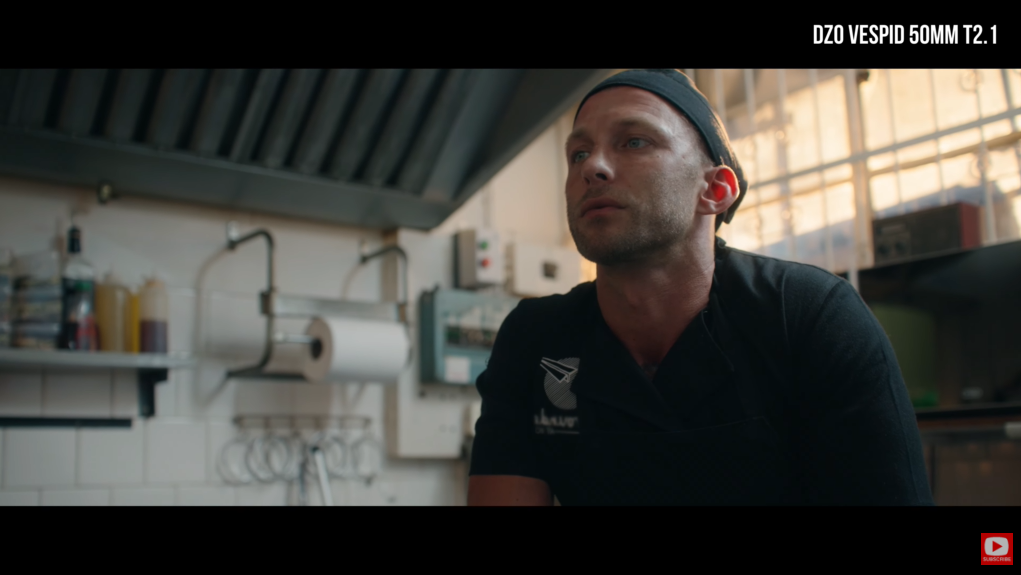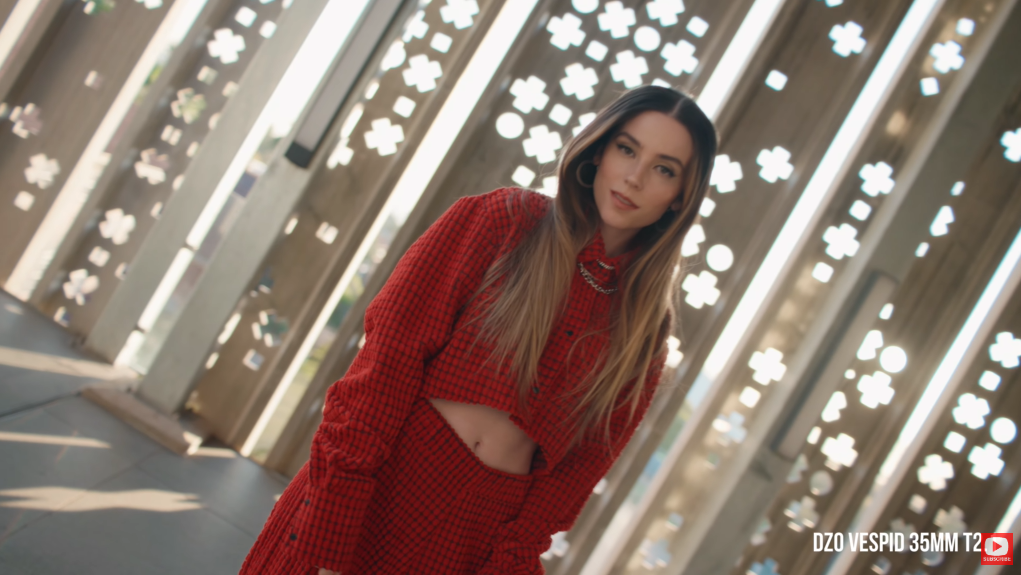With all the amazing autofocus lenses currently out there, one has to ask the question, are cinema lenses overrated? I think it depends who you ask but the short and simple answer is absolutely NOT. Maybe the bigger question here is, WHO is it for or even better, WHEN is it for?
In this video I’m going to share my thoughts on where I think cinema lenses fit in, and if they can add value to someone like me, a solo creator who either works alone or with smaller crews. I’ll be sharing my experience working with the DZOFILM Vespid Primes which I’ve been using for the past 6 months in a variety of projects. Disclaimer, DZOFILM did not pay me a cent to make this, I got the set on loan for review purposes and I have the option to return or purchase them, a question I’ll be answering at the end.
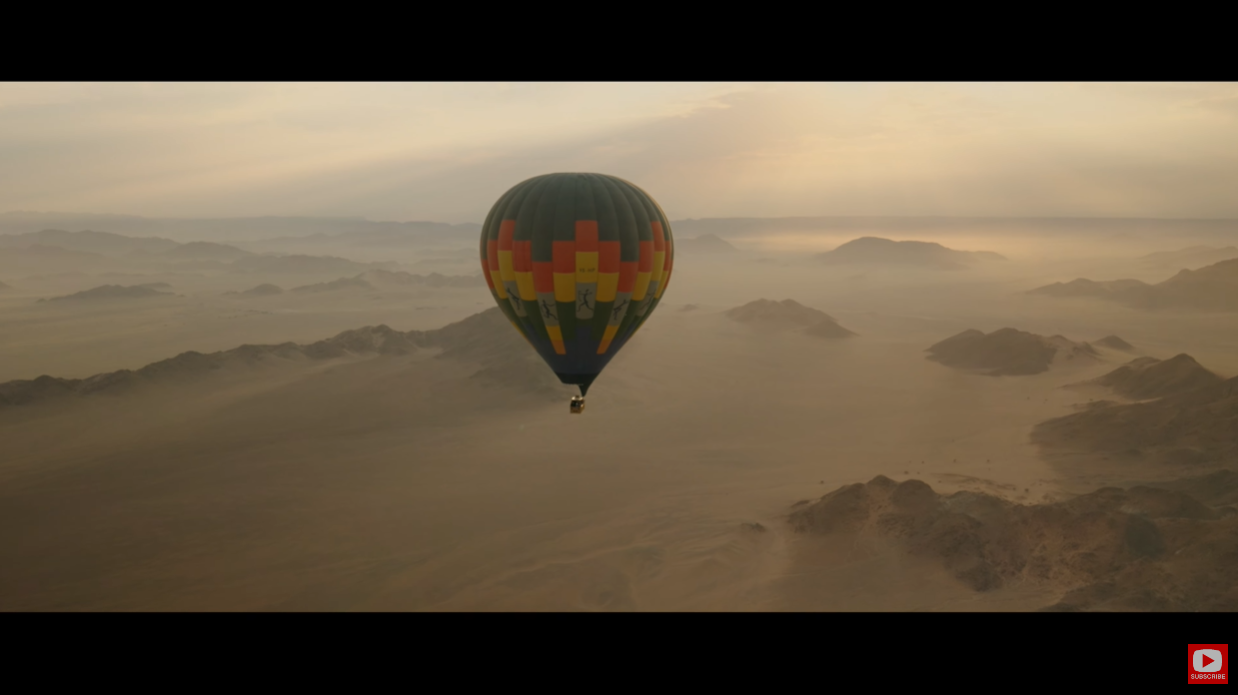
First we need to establish the WHY behind these lenses. As someone who’s pretty skilled in using autofocus one would ask WHY? Why would I go full manual if stills lenses perform so incredibly well. Is it possible that stills lenses perform too well? That they look too sharp and too perfect? Again not an easy answer because in some projects, this is what I want, it’s what I need! The first and main reason why so many TVC’s and feature films are shot on cinema lenses is because of the look. Each brand produces unique looking images with their own characteristics. From Bokeh, to chromatic aberration to flares, directors & DP’s usually choose them because they’re going after a certain look, a look that cannot be recreated by modern stills
lenses.
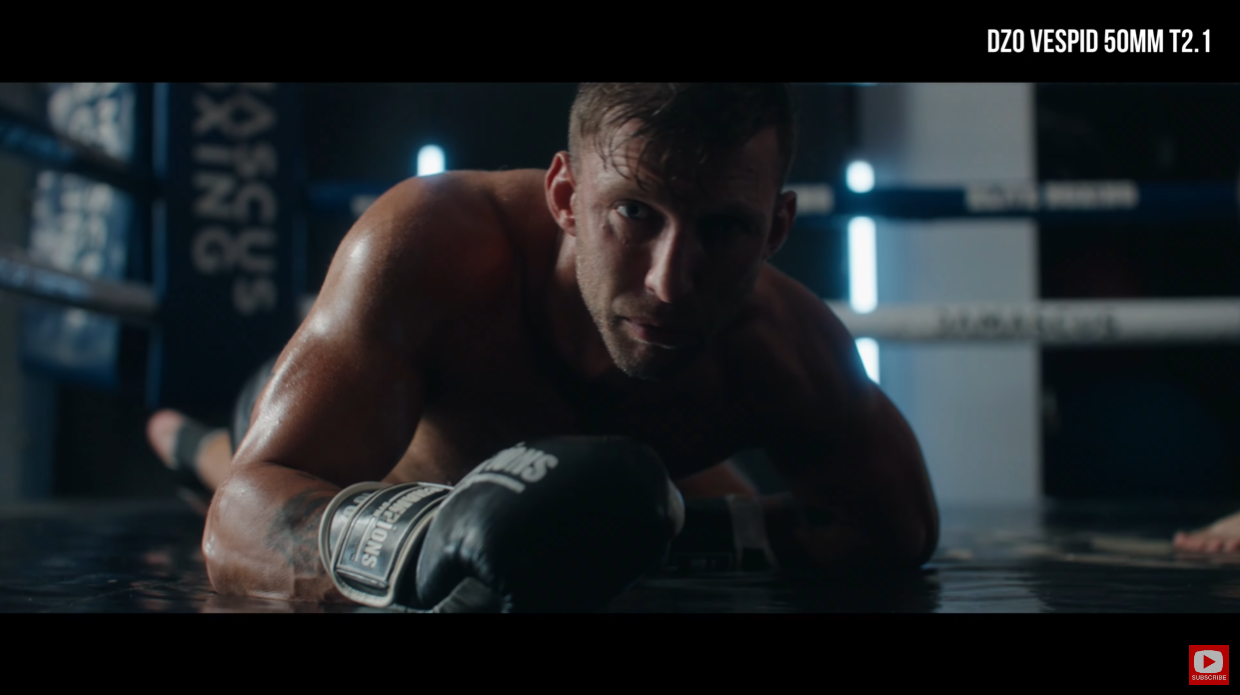
This is also why mist filters have become so popular because they help to take that digital edge off from modern sensors and super sharp stills lenses. Cinema lenses in general are not perfect and that’s the point.To me, DZOFILM falls right in the middle, not overly sharp or soft but a prefect blend of quality and character that produces an organic looking image. If you come from stills lenses, you’ll notice it the moment you start shooting. There’s just something flattering about the image, something I’m unable to re-produce in post. The colour reproduction is beautiful with creamy bokeh & natural contrast.
Stills lenses tend to produce more contrasty images, something a mist
filter reduces but with the DZOFILM lenses I hardly use mist filters unless I really want the highlights to bloom for creative effect. If you’re looking for a very clean and perfectly sharp image with zero distortion, you’re not gonna get it here because these lenses do exhibit some chromatic aberration & barrel distortion, an attribute that is quite common in cinema and vintage lenses forming part of its character.
Chromatic abberation is a slight split between red green and blue and is something I personally find quite flattering. If you pixel peep at a chart it might look like a serious flaw but when viewing the overall image at 100% it only ads character. The lenses flare really nice and overall I’m happy with how the they react to various light sources.
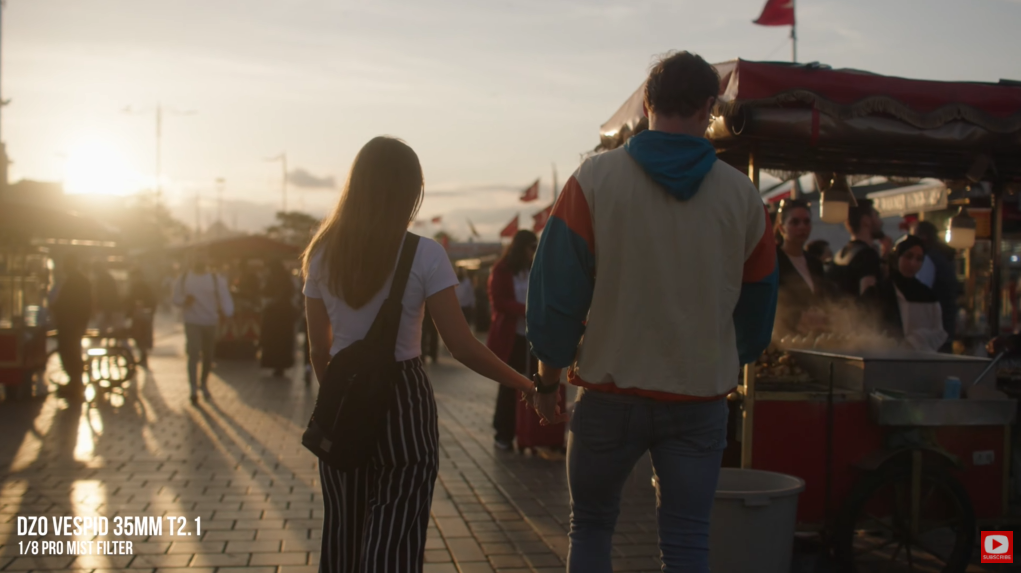
I’ve fallen in love with the look but now the big challenge arises. Manual focus. For someone who’s relied on autofocus for such a long time, trying to focus pull yourself the entire time might just be a stretch too far.
You’ve got 4 options here:
Option 1: start making use of a 1st AC to pull focus for you.
Option 2: Try out the autofocus setup using LiDar & A focus motor. Option 3: Pull focus yourself, either with your hand physically on the lens or using a follow focus.
Option 4: Just use a stills lens with amazing autofocus.
Any of these 4 options will come down to the project so lets figure that out.
For films that are scripted shot for shot where you have some control over whats happening in the scene, I’m thinking music videos, commercials, corporate promos and any story driven content, if you want to make use of cinema lenses, you will need a dedicated focus puller. Although a 1st AC takes up some of the project budget, to me the
benefits outweigh the cost. Benefits include someone exclusively managing your rig to have you shoot ready at all times. Someone to hand the camera to you and take it off your hands when you’re not filming but most important, someone to take the entire burden of focus from your shoulders.
Concentrating on focus can take up a lot of mind space because you’re not fully focused on whats happening inside the frame. Even with Autofocus in some scenarios it can be such a distraction trying to get the settings right or trying to confirm if the shot is in focus or not. With a focus puller you can just be creative and focus on the framing and the movement of the camera. Manual focus enables you to rack focus between subjects at the right time without the possibility of the image hunting in any way.
Option 2 is to use LiDaR with a focus motor set to Autofocus. This is only something I recommend when you shoot single objects that move around like fashion with a model, a helicopter or any object that’s easy to track. As the technology improves one might be able to get more performance out of it but for now it’s limited and the autoFocus I get on my Sony lenses are still superior.
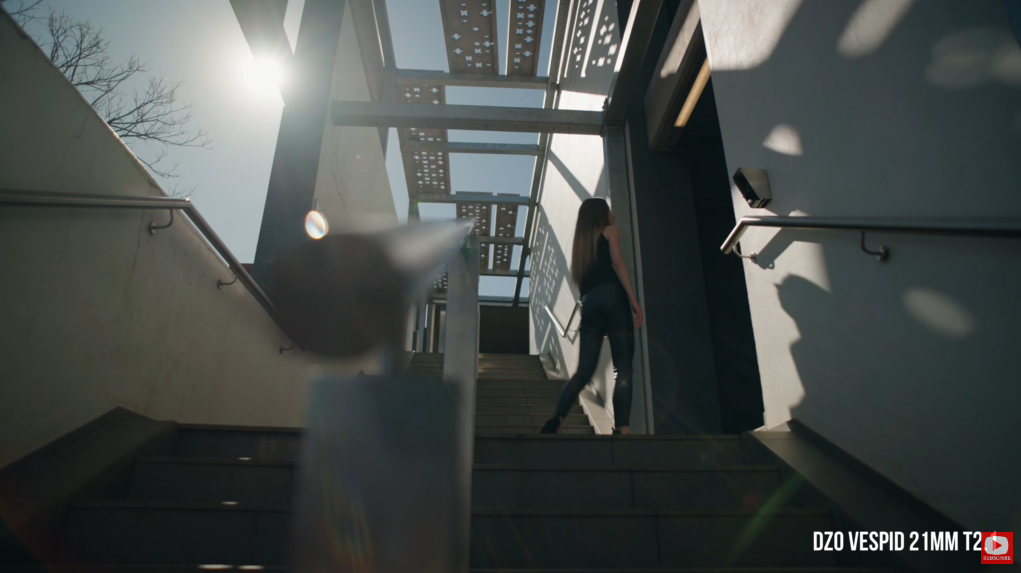
Option 3, pulling yourself is more viable when the camera itself doesn’t have to move too much and the subject movement is a bit easier to manage, like what I did in this turtle documentary as I switch from the screen to the talent at the right time. You can take it a step further using a follow focus on your rig that’s situated in a better position instead of having your hand on the lens. Same setup on a Gimbal, if the movements aren’t crazy you can easily correct the focus with the flick of a finger. This could work on some projects but I won’t recommend it for anything where you have to direct and shoot because when concentrating so much on focus you wont be able to judge the performance.
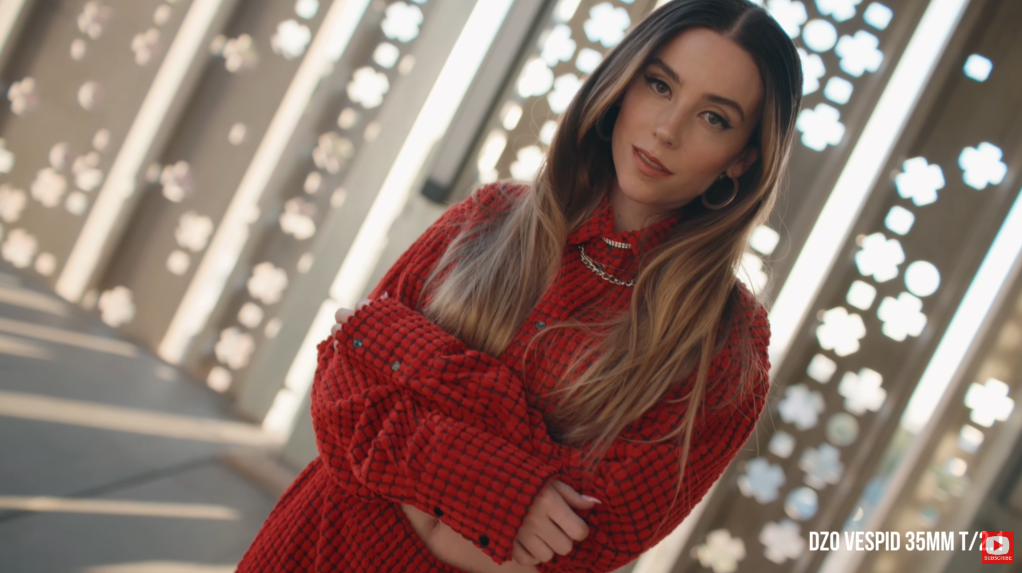
Option 4 using autofocus on a stills lens is something I still recommend for solo operators shooting mostly run & gun, documentary and event
style shoots. Shoots where subject movement is totally unpredictable or where time simply doesn’t allow for the luxury of setting up at each scene. I still use autofocus a lot on some of the day to day projects especially on the Gimbal because I can shoot wide open and do big movements without even thinking about focus. The real push from AF to Manual comes in when AF is not able to distinguish when and where to focus. This might only be for 5 or 10% of the shots in your film but when you really need to control the focus, having a good focus ring is everything. Cinema lenses have a longer focus throw, which is great because it gives you much finer control over your focus.
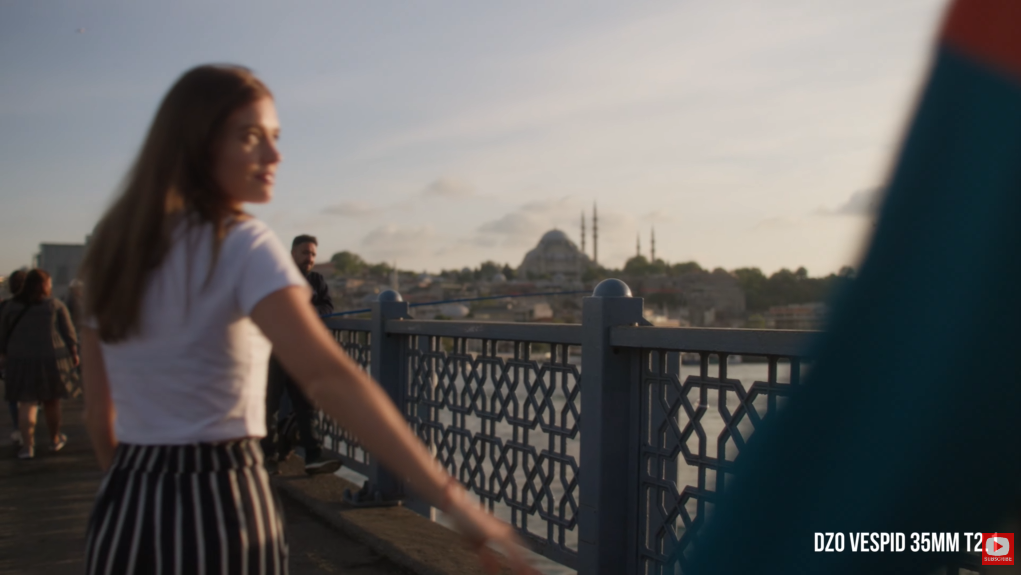
Both the focus and aperture rings on the DZOFILM Vespids rotate smooth as butter making accurate pulls easier. The focus is 100% mechanical, so nothing to do with how fast you turn it but only how far. The DZOFILM Vespids are very well built and feels super solid in your hands. All the gears are in the same position across the entire set of lenses, simplifying the swapping out of lenses keeping the follow focus in the same place. Something I also love about these lenses is that there is very little focus breathing. Focus breathing is when the movement in the frame changes as you pull focus from one extreme to the other. Now some of the new Sony Cameras have breathing compensation but compared to vintage lenses and other budget cinema lenses, the Vespids have the advantage and focus breathing is simply not an issue.

All of these lenses are rated at the same T2.1 aperture apart from the macro & 16mm which is a T2.8. All the lenses have the same filter thread size of 77mm if you plan on using screw on filters. I have a 6 lens kit which includes the 21mm, 35mm, 50mm, 75mm, 90mm macro and the 125mm. Out of this set I probably used the 21mm and the 35mm the most but a lens that really surprised me was the 90mm macro, by far the best macro I’ve worked with. It has a very close focal distance of 10.157". The lens can still be used as a normal lens but being able to get so close is a real win.So how do you know if these lenses are for you or not? I would recommend renting and trying them out first. If the image grabs you like it did me, you’ll quickly find yourself looking for ways to adapt to manual focus. So how much do I actually use these lenses? To be honest, only about 30-40% of my projects and I still very much enjoy having autofocus on the majority of my work. Will I be buying them for myself? Absolutely! Having an entire set is also important because it gets you matching colours on multicam shoots and delivers consistent images when cycling through the different focal lengths.
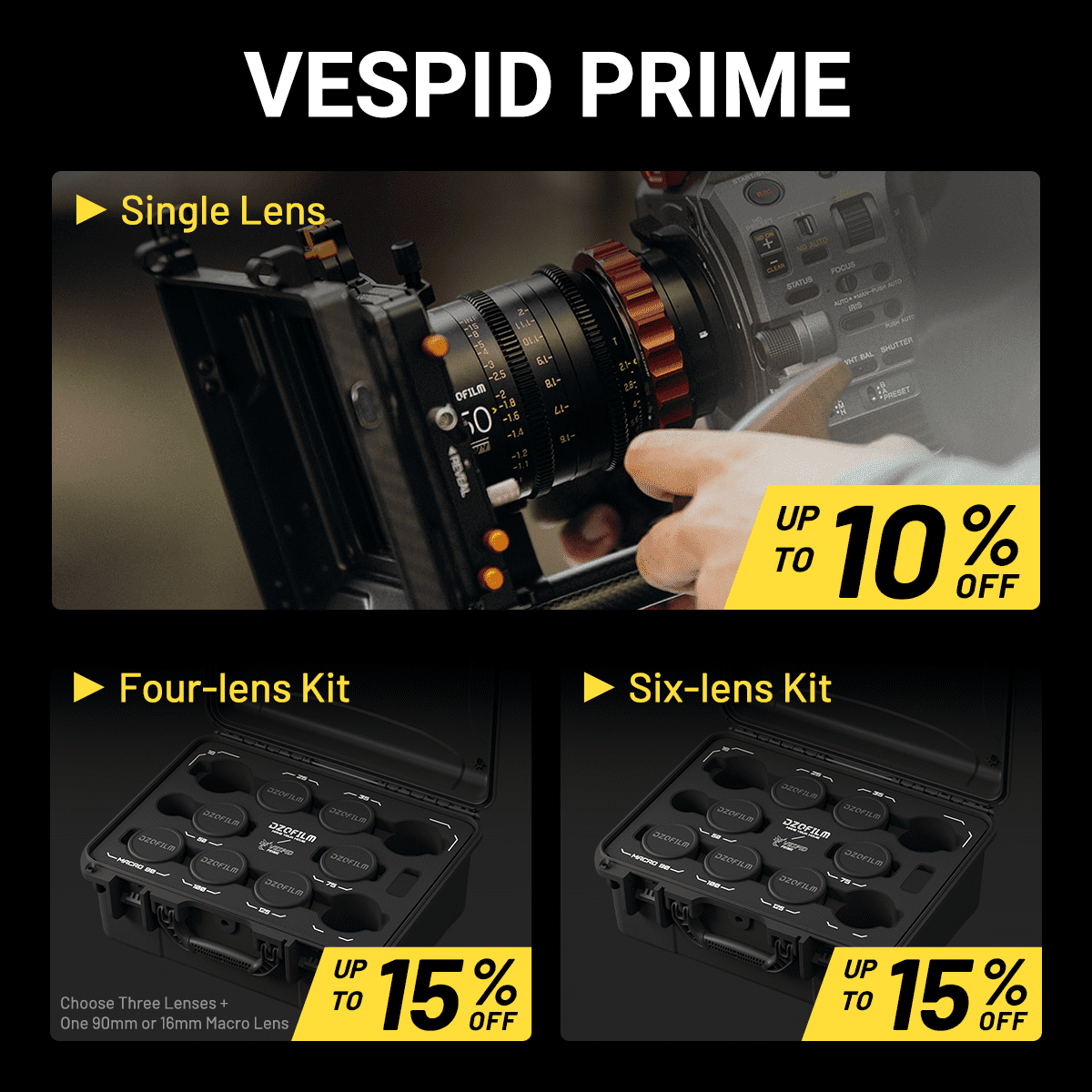
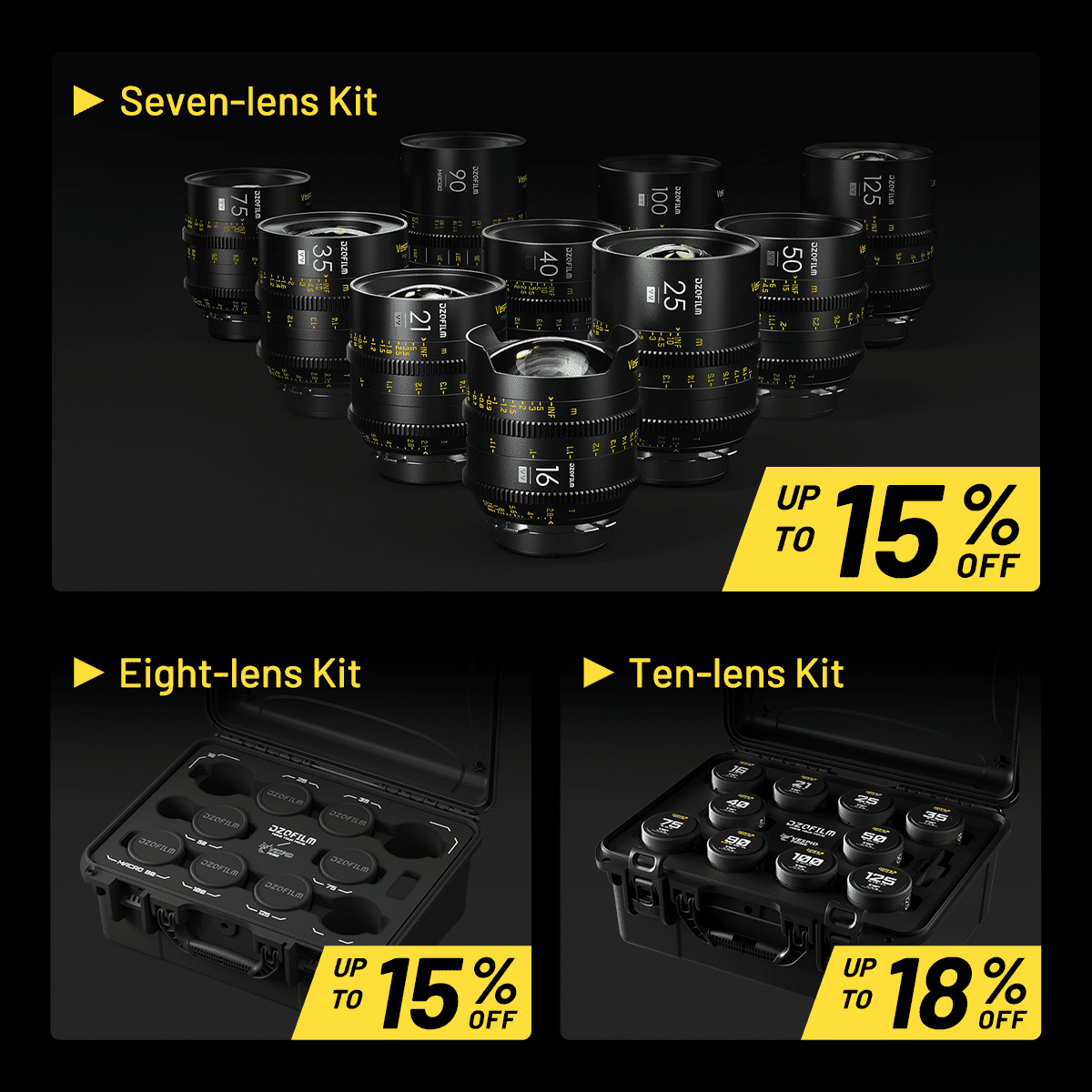
Cinema lenses are certainly not overrated but they’re also are not for everyone in every scenario. The DZO Vespid Primes are such a pleasure to shoot with that I’m always going to look for a reason to use them. I will still rely on autofocus lenses for many of my projects but the choice will be more intentional than ever. As always, questions and comments drop them down below and I’ll do my best to answer. Thanks so much for WATCHING and I’ll see you in the next one!
DZOFILM SUMMER SALE is started!
Vespid Prime 21/25/35/40/50/75/100/125mm T2.1-PL&EF Mount Single Cine Lens - save $140 - now only/ each $1,259
Vespid 16mm T2.8-PL&EF Mount Cine Lens - save $180 - now only $1,619
Vespid 90mm macro T2.8-PL&EF Mount Cine Lens - save $165 - now only $1,484
Find our dealers to get more discounts!

